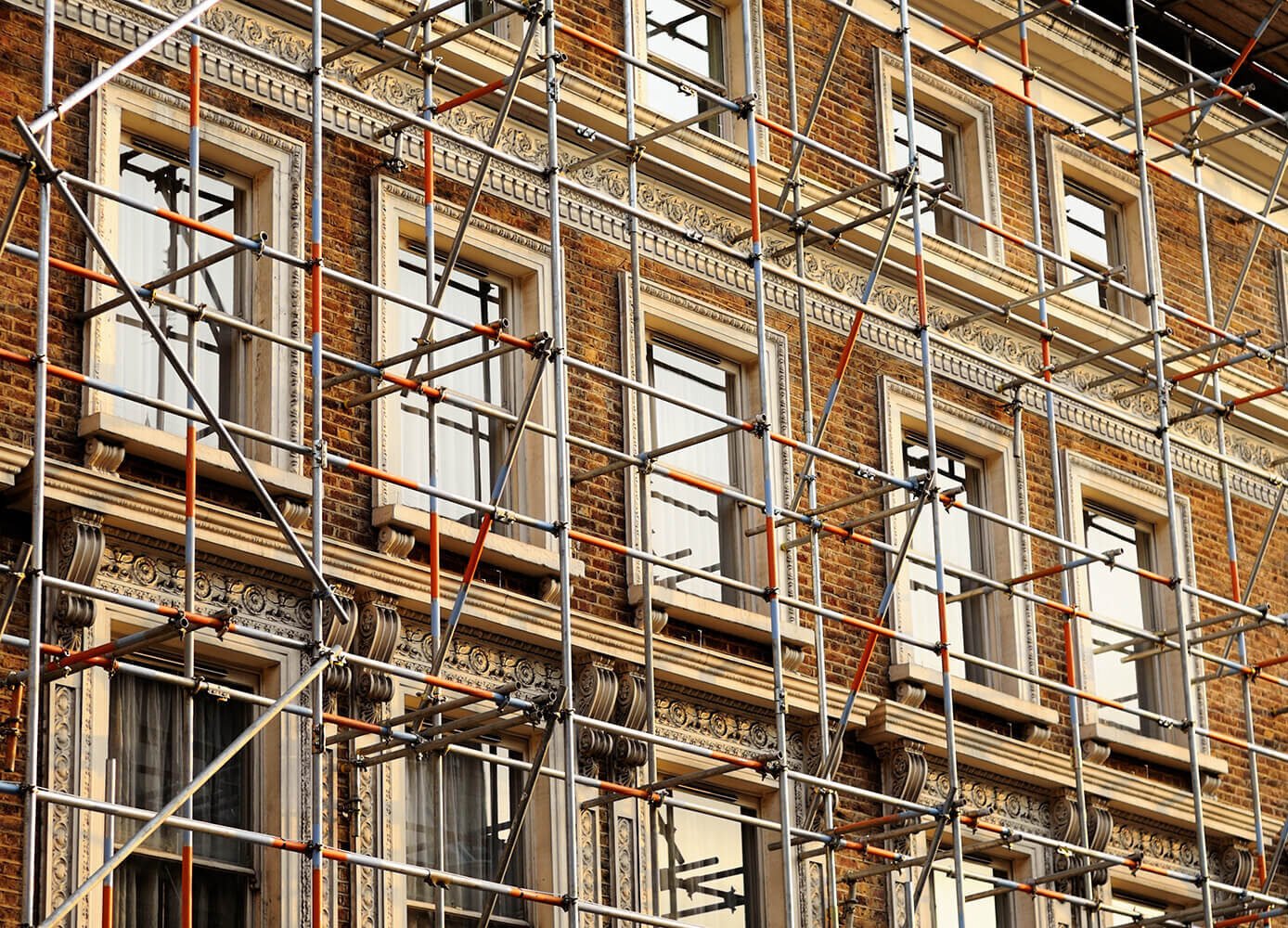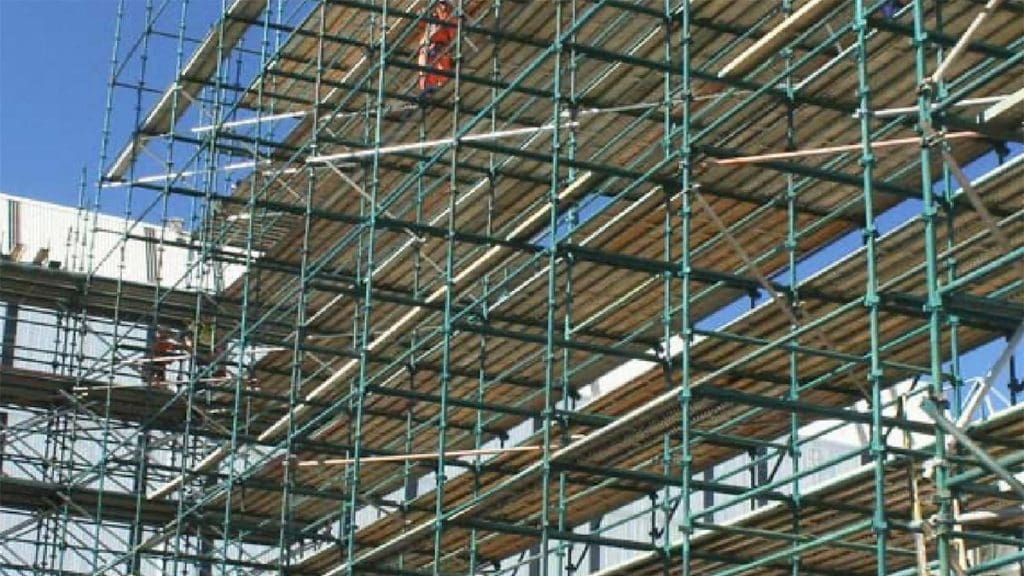Checking Out the Various Types of Scaffolding Made Use Of in Building Jobs
The building and construction industry counts heavily on numerous types of scaffolding to satisfy certain project demands, each offering distinctive benefits and applications. Standard structure scaffolding offers a durable foundation for general jobs, while put on hold scaffolding is vital for job on high-rise frameworks.

Conventional Frame Scaffolding
Traditional frame scaffolding is just one of the most widely used techniques in the construction sector due to its robustness and convenience. This system consists of straight and vertical frameworks that are put together to create a secure system for materials and employees. The primary components consist of vertical messages, straight ledgers, and angled braces, which together supply a solid structure that can support significant tons.
One of the vital advantages of typical framework scaffolding is its flexibility to various building tasks, ranging from property structures to huge commercial frameworks. The modular layout permits for easy assembly and disassembly, making it reliable for both long-term and temporary jobs. In addition, the system can be customized in height and width, accommodating different building designs and website conditions.
Security is vital in scaffolding applications, and typical frame systems are furnished with guardrails and toe boards to avoid drops and guarantee employee protection. Normal examinations and adherence to safety and security laws are critical in keeping the integrity of the scaffold (Scaffolding). Overall, typical structure scaffolding continues to be a basic choice in the construction sector, offering a trusted system for labor and improving overall job effectiveness

Suspended Scaffolding
Suspended scaffolding offers a distinct solution for building tasks that call for access to raised surface areas, especially in scenarios where typical framework scaffolding might be impractical. This kind of scaffolding is commonly suspended from the roof covering or upper levels of a framework, utilizing a system of wheels, systems, and ropes to create a functioning space that can be changed to numerous elevations.
One of the primary benefits of put on hold scaffolding is its adaptability. It can be easily rearranged or decreased to accommodate changes in building and construction requirements, making it suitable for jobs such as home window installation, frontage job, and upkeep on skyscraper buildings. Furthermore, the marginal impact of put on hold scaffolding permits much better use ground area in metropolitan atmospheres, where room is frequently limited.
Safety is a critical consideration in the usage of suspended scaffolding. Overall, suspended scaffolding provides a effective and reliable service for accessing hard-to-reach locations in different construction scenarios, improving both performance and security on website.
System Scaffolding
System scaffolding, commonly considered as a contemporary solution in the scaffolding market, consists of pre-engineered elements that can be quickly constructed and adapted for numerous construction tasks. Scaffolding. This kind of scaffolding is identified by its modular style, which enables versatility and effectiveness on job websites, accommodating architectural needs and different heights
Generally made from high-strength steel or light weight aluminum, system scaffolding uses enhanced toughness and stability. The parts include vertical articles, straight journals, and diagonal braces, which adjoin securely, making sure a robust structure. The layout typically integrates standardized installations, streamlining setting up and disassembly processes, thus decreasing labor time and expenses.

Rolling Scaffolding
Rolling scaffolding is a versatile choice to standard fixed scaffolding, designed for mobility and convenience of use on construction sites. This kind of scaffolding contains a platform supported by structures with wheels, enabling workers to quickly relocate it as needed. The wheelchair feature significantly enhances productivity, as it lessens downtime related to disassembling and assembling dealt with scaffolding.
Usually constructed from lightweight products such as aluminum or steel, rolling scaffolding provides a tough yet portable remedy for projects needing constant repositioning - Scaffolding. It is especially beneficial in jobs such as painting, drywall setup, and electric work, where accessibility to numerous heights and places is required
Safety is critical in rolling scaffolding style, with attributes such as securing wheels to avoid unplanned movement when in use, and guardrails to secure employees from falls. more information Furthermore, lots of versions are flexible in height, accommodating different task demands.
Cantilever Scaffolding

The layout of cantilever scaffolding normally involves making use of arms or braces anchored to a building or framework, allowing the platform to extend exterior safely. Safety and security is vital; thus, these scaffolds must be crafted to endure ecological problems and different tons. Normal evaluation and upkeep are vital to guarantee structural stability and employee security.
Cantilever scaffolding is preferred for its convenience and effective use space, making it a prominent selection in metropolitan settings where room constraints are typical. Furthermore, it facilitates much easier accessibility to high elevations, eventually adding to the overall effectiveness of building and construction tasks. As with all scaffolding types, appropriate training and adherence to safety and security standards are vital for workers making use of cantilever scaffolding.
Conclusion
Traditional structure scaffolding supplies stability, while suspended scaffolding supplies convenience for elevated tasks. System scaffolding facilitates fast assembly, and rolling scaffolding Discover More Here enhances wheelchair for differing work environments.
Traditional structure scaffolding provides a sturdy structure for general jobs, while suspended scaffolding is essential for job on skyscraper structures.Moving scaffolding is a versatile option to conventional set scaffolding, created for mobility and simplicity of use on building and construction sites. As with all scaffolding kinds, proper training and adherence to safety criteria are important for employees using cantilever scaffolding.
Traditional structure scaffolding offers security, while suspended scaffolding uses convenience for raised jobs. System scaffolding assists in fast assembly, and rolling scaffolding enhances movement for differing job atmospheres.
Comments on “Dependable Domestic Scaffolding for Homeowners in Need of Safe Renovations”